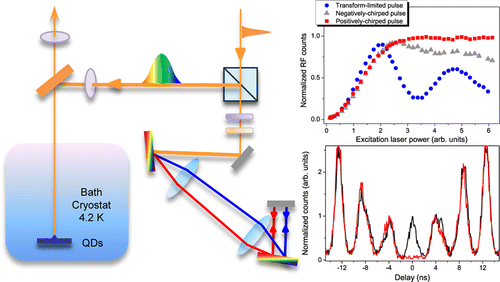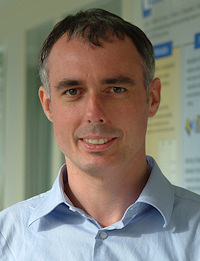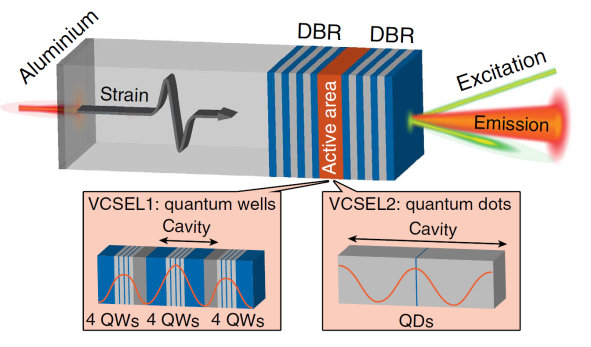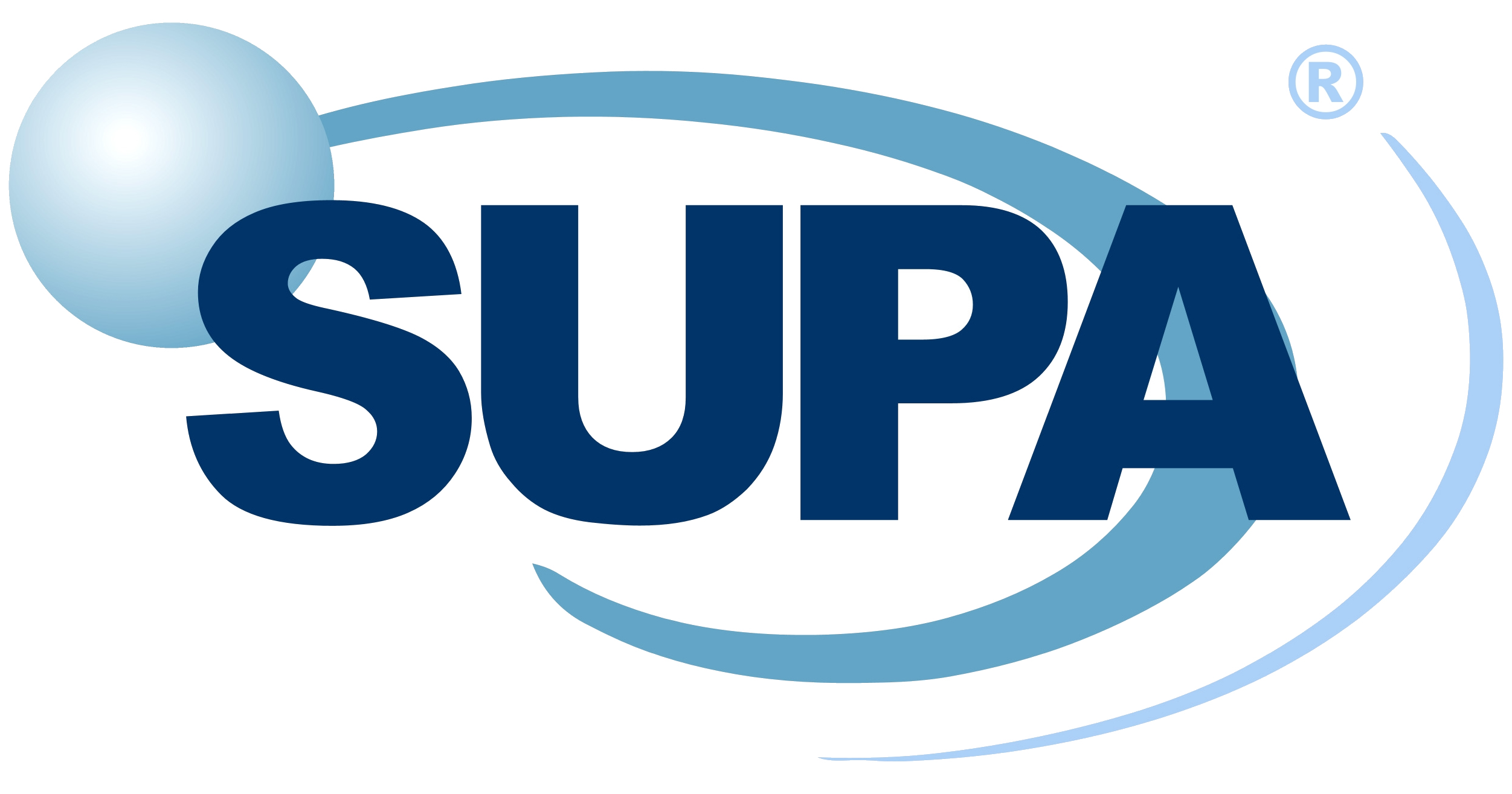QPQE Group News
29 November 2014
Two research results published in same issue of Physical Review Letters
 Two of our collaborative research results were just published in the the same issue of Physical Review Letters. Our work with colleagues from the Australian National University titled
"Creation of Orbital Angular Momentum States with Chiral Polaritonic Lense" was highlighted in Physics
and selected as an Editor suggestion (see here). It reports the controlled transfer of orbital angular
momentum to a condensate of exciton-polaritons spontaneously created under incoherent pumping. Therein, we demonstrate a simple and efficient approach for the generation of nontrivial orbital
angular momentum states by using optically induced potentials - chiral polaritonic lenses. These lenses are produced by a structured optical pump with a spatial distribution of intensity that
breaks the chiral symmetry of the system.
Two of our collaborative research results were just published in the the same issue of Physical Review Letters. Our work with colleagues from the Australian National University titled
"Creation of Orbital Angular Momentum States with Chiral Polaritonic Lense" was highlighted in Physics
and selected as an Editor suggestion (see here). It reports the controlled transfer of orbital angular
momentum to a condensate of exciton-polaritons spontaneously created under incoherent pumping. Therein, we demonstrate a simple and efficient approach for the generation of nontrivial orbital
angular momentum states by using optically induced potentials - chiral polaritonic lenses. These lenses are produced by a structured optical pump with a spatial distribution of intensity that
breaks the chiral symmetry of the system.
In our paper "Spatial Coherence Properties of One Dimensional Exciton-Polariton Condensates" we investigate
the power- and temperature-dependent evolution of the spatial coherence function in a one dimensional exciton-polariton channel. We found that the spatial dependence of the coherence function
reaches a saturation value and we were able to verify the prediction that the decay of the off-diagonal long-range order can be almost fully suppressed in one dimensional condensates.
12 November 2014
"Deterministic and Robust Generation of Single Photons from a
Single Quantum Dot with 99.5% Indistinguishability Using Adiabatic
Rapid
Passage" published in Nano Letters
 Our paper "Deterministic and Robust Generation of Single Photons from a Single Quantum Dot with 99.5% Indistinguishability Using Adiabatic Rapid Passage" has been published in Nano Letters.
Single photons are attractive candidates of quantum bits for quantum computation and are the best messengers in quantum networks. Future scalable, fault-tolerant photonic quantum technologies
demand both stringently high levels of photon indistinguishability and generation efficiency. In collaboration with our colleagues at the University of Science and Technology of China in Hefei
(China) and Wuerzburg University (Germany) we demonstrate in this work deterministic and robust generation of single photons. These photons are excited from a single semiconductor quantum dot
using pulsed resonance fluorescence and adiabatic rapid passage. This method is robust against fluctuations of the driving pulse area and dipole moments of the solid-state emitters. The emitted
photons are background-free, have a vanishing two-photon emission probability of 0.3% and a raw (corrected) two-photon Hong-Ou-Mandel interference visibility of 97.9% (99.5%), reaching a precision
that places single photons at the threshold for fault-tolerant surface-code quantum computing. This single-photon source can be readily scaled up to multiphoton entanglement and used for quantum
metrology, boson sampling, and linear optical quantum computing.
Our paper "Deterministic and Robust Generation of Single Photons from a Single Quantum Dot with 99.5% Indistinguishability Using Adiabatic Rapid Passage" has been published in Nano Letters.
Single photons are attractive candidates of quantum bits for quantum computation and are the best messengers in quantum networks. Future scalable, fault-tolerant photonic quantum technologies
demand both stringently high levels of photon indistinguishability and generation efficiency. In collaboration with our colleagues at the University of Science and Technology of China in Hefei
(China) and Wuerzburg University (Germany) we demonstrate in this work deterministic and robust generation of single photons. These photons are excited from a single semiconductor quantum dot
using pulsed resonance fluorescence and adiabatic rapid passage. This method is robust against fluctuations of the driving pulse area and dipole moments of the solid-state emitters. The emitted
photons are background-free, have a vanishing two-photon emission probability of 0.3% and a raw (corrected) two-photon Hong-Ou-Mandel interference visibility of 97.9% (99.5%), reaching a precision
that places single photons at the threshold for fault-tolerant surface-code quantum computing. This single-photon source can be readily scaled up to multiphoton entanglement and used for quantum
metrology, boson sampling, and linear optical quantum computing.
The full article published by Y.-J. Wei et al. in Nano Letters can be found here.
20 October 2014
News and Views about Giant Rydberg Excitons
A historic experiment redesigned: Sven Höfling and Alexey Kavokin (University of Southampton) discuss in a News and Views in Nature the remarkable observation of giant Rydberg excitons
by research groups from Dortmund and Rostock. Rydberg excitons with principal quantum numbers up to 25 spreading tens of billions of lattice sites have been observed in transmission spectra of a
natural crystal of copper oxide. This experiment remarkably extends the historic report of Evgenii Gross and Nury Karryjew of the first observation of Wannier-Mott excitons in 1952.
The News and Views can be found here and the article on the Rydberg excitons with a diameter as large as
2 micrometers by T. Kazimierczuk et al. is published online here.
29 August 2014
Sven Höfling received Royal Society Wolfson Research Merit Award
 Sven Höfling is one of 14 outstanding scientists working in the UK to receive the highly esteemed Wolfson Research Merit Award from the Royal Society in 2014. He receives his award in
recognition of his work on quantum engineered semiconducting and transition metal oxide materials to understand and exploit light-matter interactions.
Sven Höfling is one of 14 outstanding scientists working in the UK to receive the highly esteemed Wolfson Research Merit Award from the Royal Society in 2014. He receives his award in
recognition of his work on quantum engineered semiconducting and transition metal oxide materials to understand and exploit light-matter interactions.
Prof Höfling said: "What excites me is the interdisciplinary nature of my work, in which as an engineer I can design advanced materials, investigate them as a material scientist, explore
fundamental physics aspects as basic scientist, and as an inventor exploit new effects in devices that are successfully commercialized by companies. It is my scientific passion to engineer
artificial materials and research them. I study the interaction of them with light and customize their properties. The materials I'm working on range from inorganic and organic semiconductors
to transition metal oxides. Effects that I investigate and employ in photonic devices find direct use in areas like classical and quantum communication or optical sensing."
Sven Höfling is further announced Fellow of the Institute of Physics.
The full press article can be found here.
10 July 2014
"Lasing from active optomechanical resonators" published in
Nature Communications
 Our collaborative work on laser operation from active optomechanical resonators has just been published in Nature Communications (T. Czerniuk et al., Nat. Commun. 5, 4038 (2014)).
The results were obtained in an international research team with colleagues from Technical University Dortmund, Wuerzburg University, Ioffe Institute, Lashkaryov Institute, and University of
Nottingham.
Our collaborative work on laser operation from active optomechanical resonators has just been published in Nature Communications (T. Czerniuk et al., Nat. Commun. 5, 4038 (2014)).
The results were obtained in an international research team with colleagues from Technical University Dortmund, Wuerzburg University, Ioffe Institute, Lashkaryov Institute, and University of
Nottingham.
Vertical-cavity surface-emitting lasers consist of an active medium in between two distributed Bragg reflectors. The achieved results show that the resonant mechanical modes of these periodic
structures efficiently modulate the laser emission intensity with frequencies of up to 40 GHz.
The article can be found here.
1 May 2014
Laura Tropf joins QPQE Group
 We extend a warm welcome to Laura Tropf! She is our newest QPQE member and joins the group from 1 May 2014. She will work on laminated organic microcavities.
We extend a warm welcome to Laura Tropf! She is our newest QPQE member and joins the group from 1 May 2014. She will work on laminated organic microcavities.
Laura did her BSc thesis at the
University of Rostock before she went to the University of Bremen for her Master thesis.
1 April 2014
Prof. Höfling received Walter Schottky Prize

Photo: DPG/Sauer
Translation from the DPG homepage:
In recent years, quantum effect based device concepts like single photon sources and seminal experiments on light-matter interaction, e.g. the evidence for strong coupling in semiconductor resonators, have been realised. Sven Höfling and an international team of scientists suceeded in the demonstration of an elelctrically pumped polariton laser whose coherent radiation is caused by the polariton condensation and is not based on stimulated emission. This opens the way towards semiconductor lasers with new properties.
The original German text can be found here.
3 February 2014
Focus article published in Physik Journal


 Our focus article about "Bose einstein condensation in plastic" has been published in the February issue of the Physik Journal. The article highlights the recent progress that has been achieved in the
steadily growing field of organic polaritons.
Our focus article about "Bose einstein condensation in plastic" has been published in the February issue of the Physik Journal. The article highlights the recent progress that has been achieved in the
steadily growing field of organic polaritons.